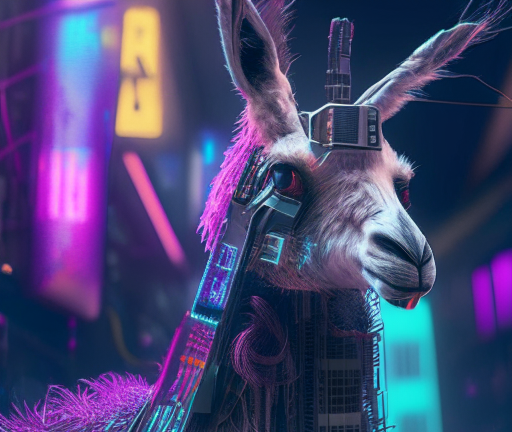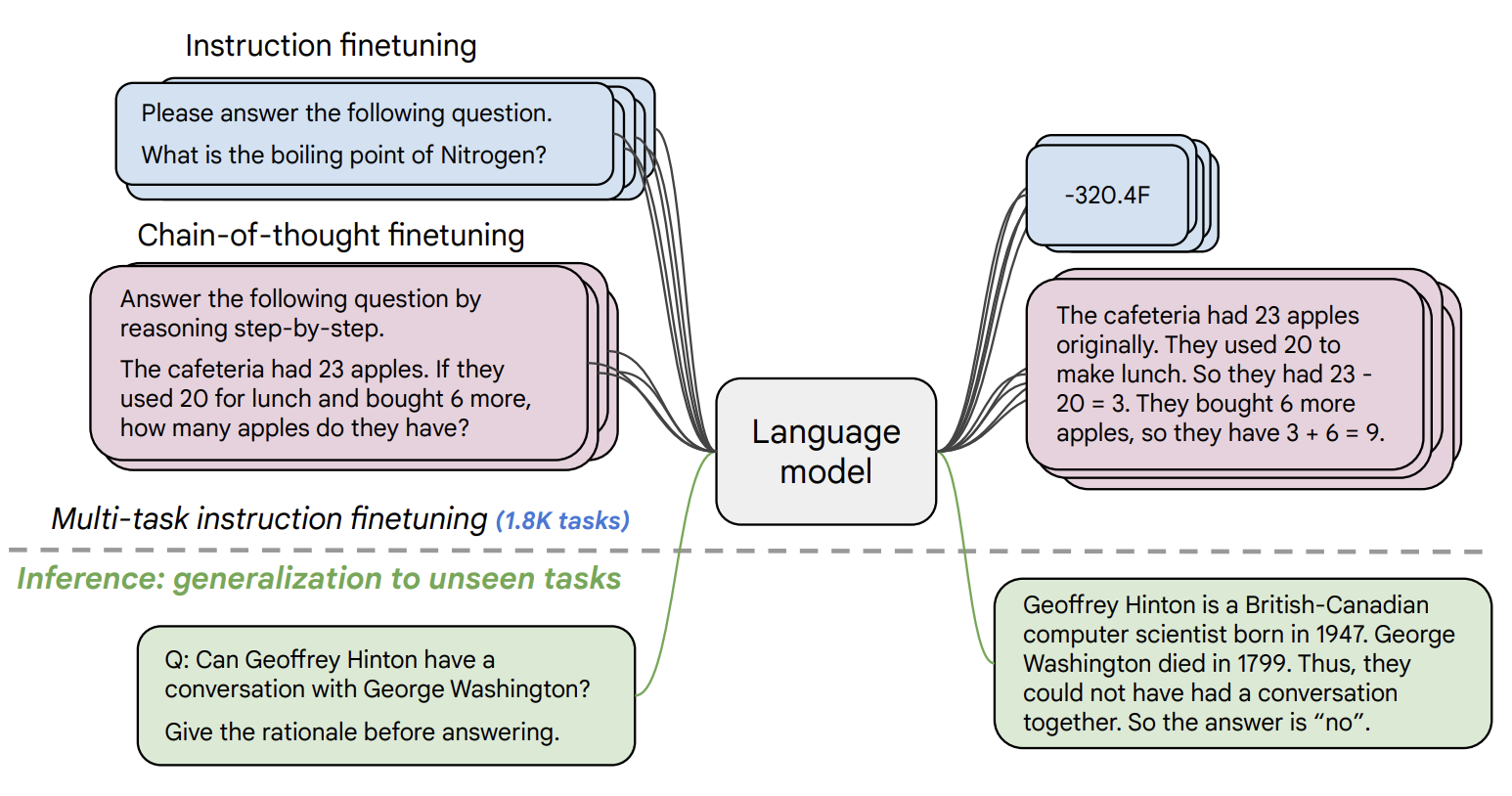Replicate
Models by this creator

all-mpnet-base-v2

983
The all-mpnet-base-v2 is a language model developed by Replicate that can be used to obtain document embeddings for downstream tasks like semantic search and clustering. This model is based on the MPNet architecture and has been fine-tuned on 1 billion sentence pairs. Similar models include all-mpnet-base-v2 for sentence embedding, stable-diffusion for text-to-image generation, and multilingual-e5-large for multi-language text embeddings. Model inputs and outputs The all-mpnet-base-v2 model takes either a single string as input or a batch of strings, and outputs an array of embeddings. These embeddings can be used for various downstream tasks like semantic search, clustering, and classification. Inputs text**: A single string to encode text_batch**: A JSON-formatted list of strings to encode Outputs An array of embeddings, where each embedding corresponds to one of the input strings Capabilities The all-mpnet-base-v2 model can be used to generate semantic embeddings for text. These embeddings capture the meaning and context of the input text, allowing for tasks like semantic search, text similarity, and clustering. The model has been fine-tuned on a large corpus of text, giving it the ability to understand a wide range of language and topics. What can I use it for? The all-mpnet-base-v2 model can be used for a variety of natural language processing tasks, such as: Semantic search**: Use the embeddings to find similar documents or passages based on their semantic content, rather than just keywords. Text clustering**: Group related documents or passages based on the similarity of their embeddings. Recommendation systems**: Recommend relevant content to users based on the similarity of the embeddings to their interests or previous interactions. Things to try One interesting thing to try with the all-mpnet-base-v2 model is to compare the embeddings of different texts and see how they relate to each other semantically. You could, for example, encode a set of news articles or research papers and then visualize the relationships between them using techniques like t-SNE or UMAP. This could help you gain insights into the underlying themes and connections within your data.
Updated 5/9/2024

dreambooth

288
dreambooth is a deep learning model developed by researchers from Google Research and Boston University in 2022. It is used to fine-tune existing text-to-image models, such as Stable Diffusion, allowing them to generate more personalized and customized outputs. By training the model on a small set of images, dreambooth can learn to associate a unique identifier with a specific subject, enabling the generation of new images that feature that subject in various contexts. Model inputs and outputs dreambooth takes a set of training images as input, along with prompts that describe the subject and class of those images. The model then outputs trained weights that can be used to generate custom variants of the base text-to-image model, such as Stable Diffusion. Inputs instance_data: A ZIP file containing the training images of the subject you want to specialize the model for. instance_prompt: A prompt that describes the subject of the training images, in the format "a [identifier] [class noun]". class_prompt: A prompt that describes the broader class of the training images, in the format "a [class noun]". class_data (optional): A ZIP file containing training images for the broader class, to help the model maintain generalization. Outputs Trained weights that can be used to generate images with the customized subject. Capabilities dreambooth allows you to fine-tune a pre-trained text-to-image model, such as Stable Diffusion, to specialize in generating images of a specific subject. By training on a small set of images, the model can learn to associate a unique identifier with that subject, enabling the generation of new images that feature the subject in various contexts. What can I use it for? You can use dreambooth to create your own custom variants of text-to-image models, allowing you to generate images that feature specific subjects, characters, or objects. This can be useful for a variety of applications, such as: Generating personalized content for marketing or e-commerce Creating custom assets for video games, films, or other media Exploring creative and artistic use cases by training the model on your own unique subjects Things to try One interesting aspect of dreambooth is its ability to maintain the generalization of the base text-to-image model, even as it specializes in a specific subject. By incorporating the class_prompt and optional class_data, the model can learn to generate a variety of images within the broader class, while still retaining the customized subject. Try experimenting with different prompts and training data to see how this balance can be achieved.
Updated 5/9/2024

vicuna-13b

251
vicuna-13b is an open-source large language model (LLM) developed by Replicate. It is based on Meta's LLaMA model and has been fine-tuned on user-shared conversations from ShareGPT. According to the provided information, vicuna-13b outperforms comparable models like Stanford Alpaca, and reaches 90% of the quality of OpenAI's ChatGPT and Google Bard. Model inputs and outputs vicuna-13b is a text-based LLM that can be used to generate human-like responses to prompts. The model takes in a text prompt as input and produces a sequence of text as output. Inputs Prompt**: The text prompt that the model will use to generate a response. Seed**: A seed for the random number generator, used for reproducibility. Debug**: A boolean flag to enable debugging output. Top P**: The percentage of most likely tokens to sample from when decoding text. Temperature**: A parameter that adjusts the randomness of the model's outputs. Repetition Penalty**: A penalty applied to repeated words in the generated text. Max Length**: The maximum number of tokens to generate in the output. Outputs Output**: An array of strings representing the generated text. Capabilities vicuna-13b is capable of generating human-like responses to a wide variety of prompts, from open-ended conversations to task-oriented instructions. The model has shown strong performance in evaluations compared to other LLMs, suggesting it can be a powerful tool for applications like chatbots, content generation, and more. What can I use it for? vicuna-13b can be used for a variety of applications, such as: Developing conversational AI assistants or chatbots Generating text content like articles, stories, or product descriptions Providing task-oriented assistance, such as answering questions or providing instructions Exploring the capabilities of large language models and their potential use cases Things to try One interesting aspect of vicuna-13b is its ability to generate responses that capture the nuances and patterns of human conversation, as it was trained on real user interactions. You could try prompting the model with more open-ended or conversational prompts to see how it responds, or experiment with different parameter settings to explore the model's capabilities.
Updated 5/9/2024

flan-t5-xl

132
flan-t5-xl is a large language model developed by Google that is based on the T5 model architecture. It is a "FLAN" (Finetuned Language Model) model, meaning it has been fine-tuned on a diverse set of over 1,000 tasks and datasets to improve its performance on a wide range of language understanding and generation tasks. The flan-t5-xl model is the extra-large variant, with more parameters than the standard T5 model. Similar models include the smaller flan-t5-large model and the even larger FLAN-T5-XXL model. There is also the multilingual multilingual-e5-large model which is designed for multi-language tasks. Model inputs and outputs The flan-t5-xl model takes in text prompts as input and generates text outputs. The model can be used for a variety of natural language processing tasks such as classification, summarization, translation, and more. Inputs prompt**: The text prompt to send to the FLAN-T5 model Outputs generated text**: The text generated by the model in response to the input prompt Capabilities flan-t5-xl is a highly capable language model that can perform a wide range of NLP tasks. It has been fine-tuned on over 1,000 different tasks and datasets, giving it broad competence. The model can excel at tasks like summarization, translation, question answering, and open-ended text generation. What can I use it for? The flan-t5-xl model could be used for a variety of applications that require natural language processing, such as: Content generation**: Use the model to generate human-like text for things like product descriptions, marketing copy, or creative writing. Summarization**: Leverage the model's summarization capabilities to automatically generate concise summaries of long documents or articles. Translation**: Fine-tune the model on translation data to create a multilingual language model that can translate between various languages. Question answering**: Use the model to build chatbots or virtual assistants that can understand and respond to user questions. Things to try One interesting aspect of the flan-t5-xl model is its strong few-shot learning performance. This means that it can often achieve good results on new tasks with just a handful of training examples, without requiring extensive fine-tuning. Experimenting with different prompting techniques and few-shot learning setups could yield some surprising and novel applications for the model. Another intriguing area to explore would be using the flan-t5-xl model in a multi-modal setting, combining its language understanding capabilities with visual or other modalities. This could unlock new ways of interacting with and reasoning about the world.
Updated 5/9/2024

llama-7b

98
The llama-7b is a transformers implementation of the LLaMA language model, a 7 billion parameter model developed by Meta Research. Similar to other models in the LLaMA family, like the llama-2-7b, llama-2-13b, and llama-2-70b, the llama-7b model is designed for natural language processing tasks. The codellama-7b and codellama-7b-instruct models are tuned versions of LLaMA for coding and conversation. Model inputs and outputs The llama-7b model takes a text prompt as input and generates a continuation of that prompt as output. The model can be fine-tuned on specific tasks, but by default it is trained for general language modeling. Inputs prompt**: The text prompt to generate a continuation for Outputs text**: The generated continuation of the input prompt Capabilities The llama-7b model can generate coherent and fluent text on a wide range of topics. It can be used for tasks like language translation, text summarization, and content generation. The model's performance is competitive with other large language models, making it a useful tool for natural language processing applications. What can I use it for? The llama-7b model can be used for a variety of natural language processing tasks, such as text generation, language translation, and content creation. Developers can use the model to build applications that generate written content, assist with text-based tasks, or enhance language understanding capabilities. The model's open-source nature also allows for further research and experimentation. Things to try One interesting aspect of the llama-7b model is its ability to generate coherent and contextual text. Try prompting the model with the beginning of a story or essay, and see how it continues the narrative. You can also experiment with fine-tuning the model on specific domains or tasks to see how it performs on more specialized language processing challenges.
Updated 5/9/2024

train-rvc-model

8
The train-rvc-model is a retrieval-based voice conversion framework developed by Replicate that allows users to train their own custom RVC (Retrieval-based Voice Conversion) models. It is built upon the VITS (Variational Inference for Text-to-Speech) architecture and aims to provide a simple and easy-to-use voice conversion solution. The model leverages techniques such as top-1 retrieval to prevent audio quality degradation and supports training with relatively small datasets, making it accessible for users with limited resources. The RVC framework can also be used to blend models for changing the output voice characteristics. Model inputs and outputs The train-rvc-model takes in various inputs to configure the training process, including the training dataset, the model version, the F0 (fundamental frequency) extraction method, the training epoch, and the batch size. The key inputs are: Inputs Dataset Zip**: A zip file containing the training dataset, with the dataset split into individual WAV files. Version**: The version of the RVC model to train, with the latest version being v2. F0 method**: The method used for extracting the fundamental frequency of the audio, with the recommended option being rmvpe_gpu. Epoch**: The number of training epochs to run. Batch Size**: The batch size to use during training. Outputs Output**: The trained RVC model, which can be used for voice conversion tasks. Capabilities The train-rvc-model is capable of training custom RVC models that can perform high-quality voice conversion, even with relatively small datasets. The model leverages advanced techniques like top-1 retrieval to prevent audio quality degradation and supports training on limited hardware resources. Additionally, the RVC framework allows for model blending, enabling users to adjust the output voice characteristics. What can I use it for? The train-rvc-model can be used for a variety of voice conversion applications, such as generating synthetic voices, dubbing audio in different languages, or creating personalized voice assistants. By training custom RVC models, users can tailor the voice characteristics to their specific needs, whether it's for personal projects, commercial applications, or creative endeavors. The model's ability to work with small datasets and its simple web-based interface make it accessible for a wide range of users. Things to try One interesting feature to explore with the train-rvc-model is the ability to blend multiple RVC models together. By utilizing the "ckpt-merge" option in the web interface, users can combine different trained models to create unique voice characteristics. This can be used to experiment with various voice styles or to refine the output based on specific preferences. Another aspect worth exploring is the model's performance on different hardware setups, including AMD Radeon and Intel IPEX-enabled GPUs. The RVC framework is designed to be hardware-agnostic, allowing users to leverage a variety of hardware configurations to train their models.
Updated 5/9/2024

mpt-7b-storywriter

8
mpt-7b-storywriter is a 7 billion parameter language model fine-tuned by MosaicML to excel at generating long-form fictional stories. It was built by fine-tuning the MPT-7B model on a filtered subset of the books3 dataset, with a focus on stories. Unlike a standard language model, mpt-7b-storywriter can handle very long context lengths of up to 65,536 tokens thanks to the use of Attention with Linear Biases (ALiBi). MosaicML has demonstrated the model's ability to generate coherent stories with up to 84,000 tokens on a single node of 8 A100 GPUs. This model shares similarities with other large language models like LLAMA-7B and LLAMA-2-7B in terms of model size and architecture. However, mpt-7b-storywriter is specifically tailored for long-form story generation through its fine-tuning on fiction datasets and use of ALiBi. Model inputs and outputs Inputs Prompt**: The starting text to use as a prompt for the model to continue generating. Max Length**: The maximum number of tokens to generate. Temperature**: Controls the randomness of the generated text, with higher values producing more diverse and unpredictable output. Top P**: Limits the model to sampling from the top P% of the most likely tokens, reducing randomness. Repetition Penalty**: Discourages the model from repeating the same words or phrases. Length Penalty**: Adjusts the model's preference for generating longer or shorter sequences. Seed**: Sets a random seed for reproducible outputs. Debug**: Provides additional logging for debugging purposes. Outputs Generated Text**: The text generated by the model, continuing the provided prompt. Capabilities mpt-7b-storywriter excels at generating long-form, coherent fictional stories. It can maintain narrative consistency and flow over thousands of tokens, making it a powerful tool for creative writing tasks. The model's ability to handle extremely long context lengths sets it apart from standard language models, allowing for more immersive and engaging story generation. What can I use it for? mpt-7b-storywriter is well-suited for a variety of creative writing and storytelling applications. Writers and authors could use it to generate story ideas, plot outlines, or even full-length novels with the model's guidance. Content creators could leverage the model to produce engaging fiction for interactive experiences, games, or multimedia projects. Additionally, the model's capabilities could be harnessed for educational purposes, such as helping students with creative writing exercises or inspiring them to explore their own storytelling abilities. Things to try One interesting aspect of mpt-7b-storywriter is its ability to extrapolate beyond its training context length of 65,536 tokens. By adjusting the max_seq_len parameter in the model's configuration, you can experiment with generating even longer stories, potentially unlocking new narrative possibilities. Another avenue to explore is the model's behavior with different prompt styles or genres. Try providing it with various types of story starters, from fantasy epics to slice-of-life dramas, and observe how the generated content adapts to the specific narrative context.
Updated 5/9/2024

gpt-j-6b

8
gpt-j-6b is a large language model developed by EleutherAI, a non-profit AI research group. It is a fine-tunable model that can be adapted for a variety of natural language processing tasks. Compared to similar models like stable-diffusion, flan-t5-xl, and llava-13b, gpt-j-6b is specifically designed for text generation and language understanding. Model inputs and outputs The gpt-j-6b model takes a text prompt as input and generates a completion in the form of more text. The model can be fine-tuned on a specific dataset, allowing it to adapt to various tasks like question answering, summarization, and creative writing. Inputs Prompt**: The initial text that the model will use to generate a completion. Outputs Completion**: The text generated by the model based on the input prompt. Capabilities gpt-j-6b is capable of generating human-like text across a wide range of domains, from creative writing to task-oriented dialog. It can be used for tasks like summarization, translation, and open-ended question answering. The model's performance can be further improved through fine-tuning on specific datasets. What can I use it for? The gpt-j-6b model can be used for a variety of applications, such as: Content Generation**: Generating high-quality text for articles, stories, scripts, and more. Chatbots and Virtual Assistants**: Building conversational AI systems that can engage in natural dialogue. Question Answering**: Answering open-ended questions by retrieving and synthesizing relevant information. Summarization**: Condensing long-form text into concise summaries. These capabilities make gpt-j-6b a versatile tool for businesses, researchers, and developers looking to leverage advanced natural language processing in their projects. Things to try One interesting aspect of gpt-j-6b is its ability to perform few-shot learning, where the model can quickly adapt to a new task or domain with only a small amount of fine-tuning data. This makes it a powerful tool for rapid prototyping and experimentation. You could try fine-tuning the model on your own dataset to see how it performs on a specific task or application.
Updated 5/9/2024

resnet

7
The resnet model is a popular image classification model developed by Microsoft. It is based on the ResNet (Residual Network) architecture, which uses skip connections to enable the training of deeper neural networks. The resnet model is pre-trained on the ImageNet-1k dataset and can be used to classify images into 1,000 different categories. Similar models include the ResNet-50 v1.5 model, which is a slightly more accurate version of the original ResNet-50 model, as well as the Stable Diffusion, GFPGAN, Real-ESRGAN, and BLIP models, which address different image-related tasks. Model inputs and outputs The resnet model takes an image as input and outputs a classification of that image into one of the 1,000 ImageNet classes. Inputs Image**: The image to be classified, in the format of a URI. Outputs Title**: The output of the model, which is the predicted class label for the input image. Capabilities The resnet model is capable of accurately classifying a wide variety of images into 1,000 different categories, making it a versatile tool for image recognition tasks. It has been widely adopted and used in a range of applications, from object detection to scene understanding. What can I use it for? The resnet model can be used for a variety of image classification tasks, such as identifying objects, scenes, or activities in an image. It can be fine-tuned on specialized datasets to adapt it to specific use cases, such as medical image analysis or product recognition. Additionally, the model can be used as a feature extractor to provide input to other machine learning models, such as those used for image captioning or visual question answering. Things to try Some ideas for experimenting with the resnet model include: Trying the model on a diverse set of images to see its performance across different categories. Fine-tuning the model on a specialized dataset to adapt it to a specific task. Using the model as a feature extractor for other machine learning models. Exploring the model's internal representations to gain insights into how it makes its predictions.
Updated 5/9/2024

llama-13b-lora

5
llama-13b-lora is a Transformers implementation of the LLaMA 13B language model, created by Replicate. It is a 13 billion parameter language model, similar to other LLaMA models like llama-7b, llama-2-13b, and llama-2-7b. Additionally, there are tuned versions of the LLaMA model for code completion, such as codellama-13b and codellama-13b-instruct. Model inputs and outputs llama-13b-lora takes a text prompt as input and generates text as output. The model can be configured with various parameters to adjust the randomness, length, and repetition of the generated text. Inputs Prompt**: The text prompt to send to the Llama model. Max Length**: The maximum number of tokens (generally 2-3 per word) to generate. Temperature**: Adjusts the randomness of the outputs, with higher values being more random and lower values being more deterministic. Top P**: Samples from the top p percentage of most likely tokens when decoding text, allowing the model to ignore less likely tokens. Repetition Penalty**: Adjusts the penalty for repeated words in the generated text, with values greater than 1 discouraging repetition and values less than 1 encouraging it. Debug**: Provides debugging output in the logs. Outputs An array of generated text outputs. Capabilities llama-13b-lora is a large language model capable of generating human-like text on a wide range of topics. It can be used for tasks such as language modeling, text generation, question answering, and more. The model's capabilities are similar to other LLaMA models, but with the added benefits of the LORA (Low-Rank Adaptation) fine-tuning approach. What can I use it for? llama-13b-lora can be used for a variety of natural language processing tasks, such as: Generating creative content like stories, articles, or poetry Answering questions and providing information on a wide range of topics Assisting with tasks like research, analysis, and brainstorming Helping with language learning and translation Powering conversational interfaces and chatbots Companies and individuals can potentially monetize llama-13b-lora by incorporating it into their products and services, such as Replicate's own offerings. Things to try With llama-13b-lora, you can experiment with different input prompts and model parameters to see how they affect the generated text. For example, you can try adjusting the temperature to create more or less random outputs, or the repetition penalty to control how much the model repeats words or phrases. Additionally, you can explore using the model for specific tasks like summarization, question answering, or creative writing to see how it performs.
Updated 5/9/2024